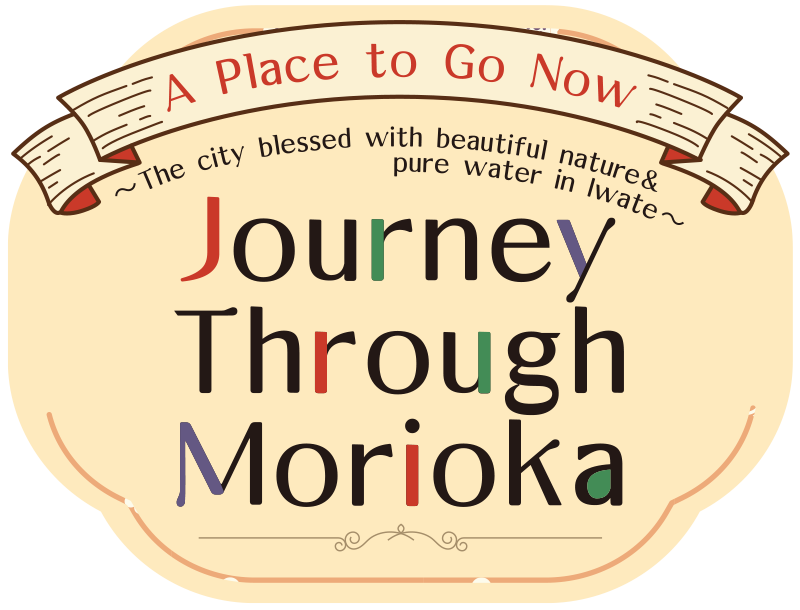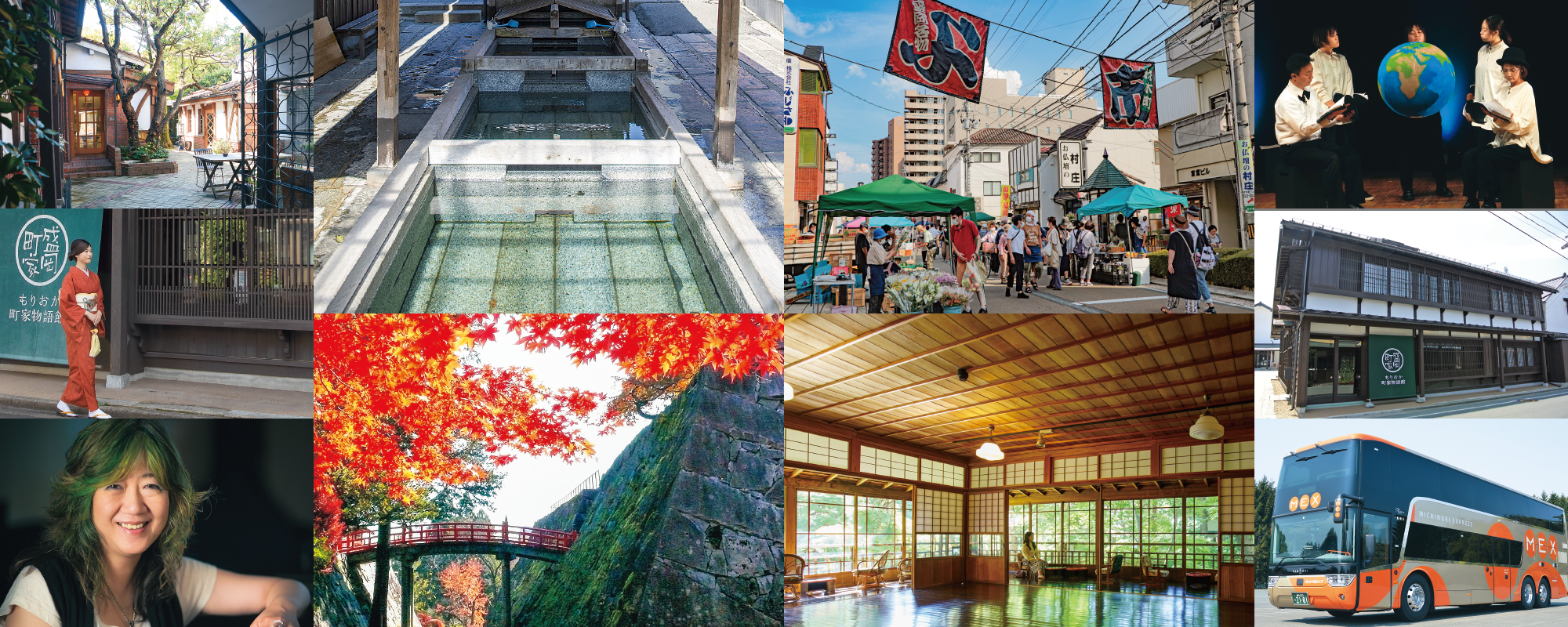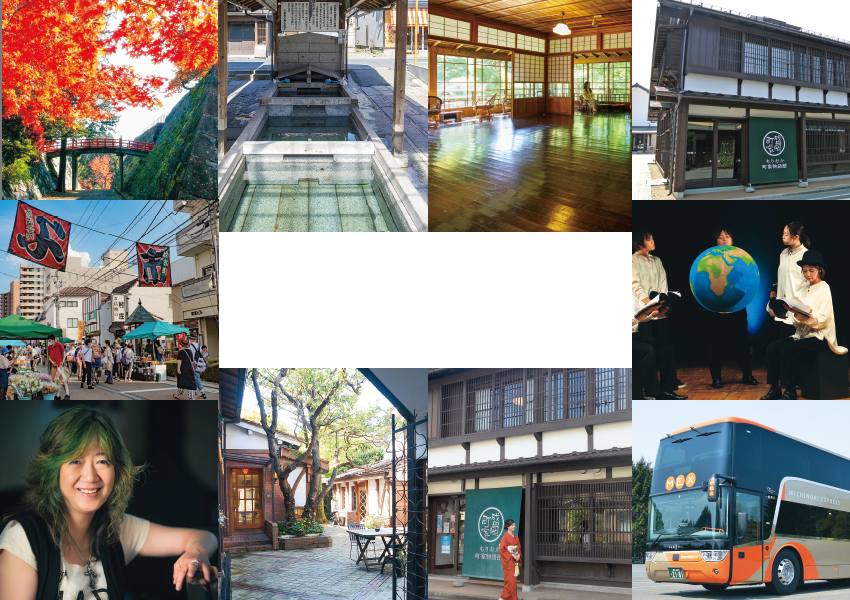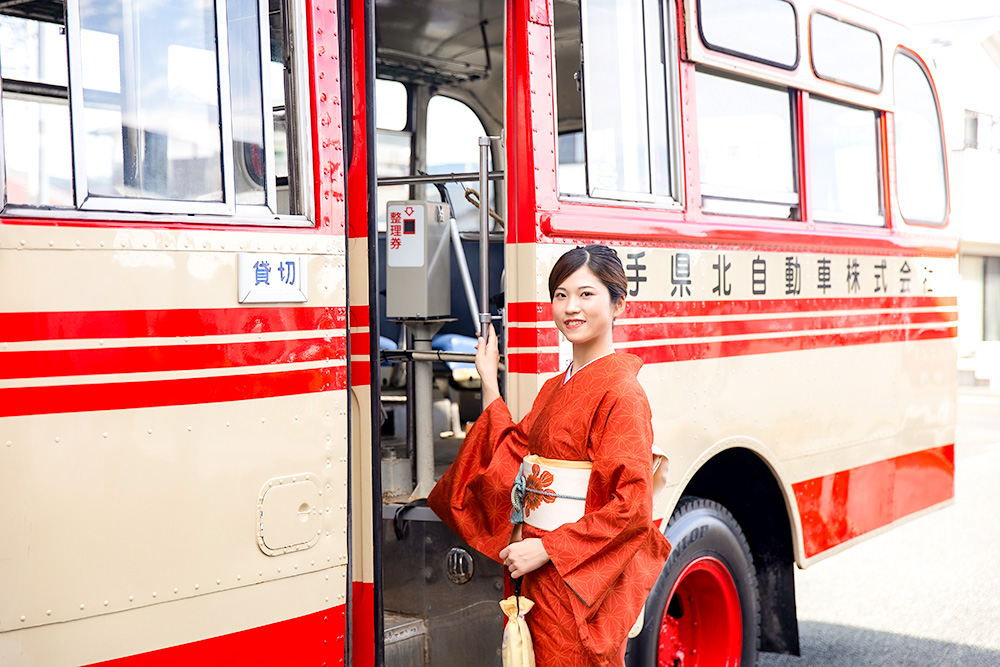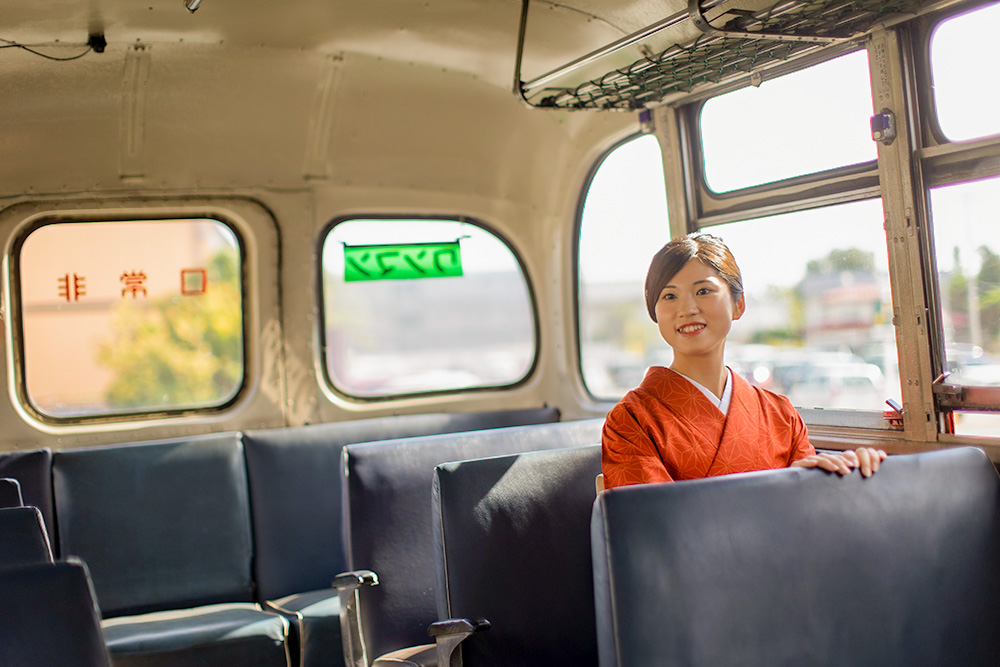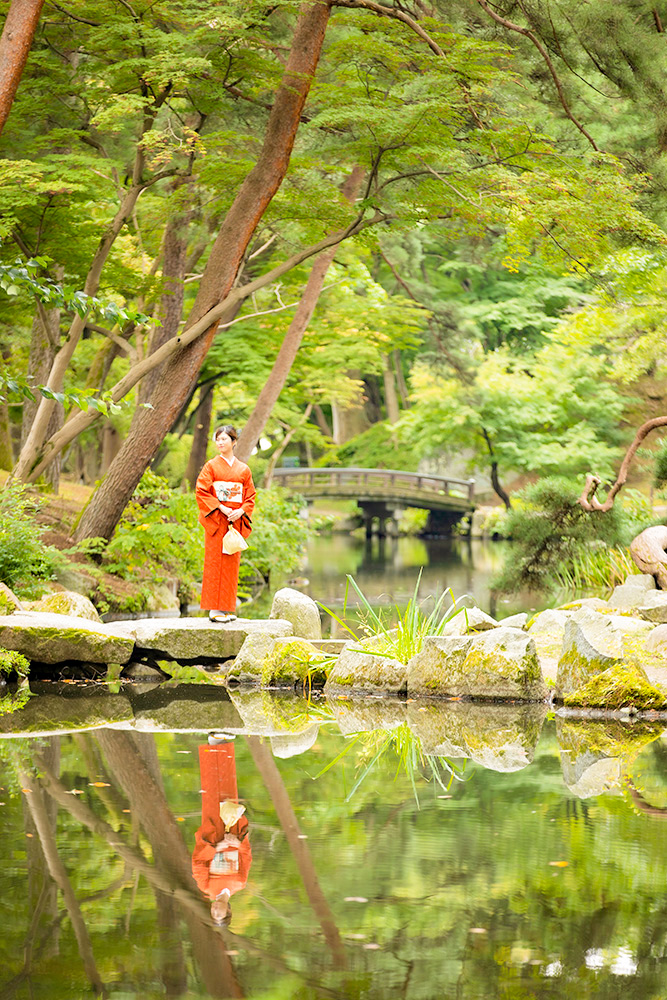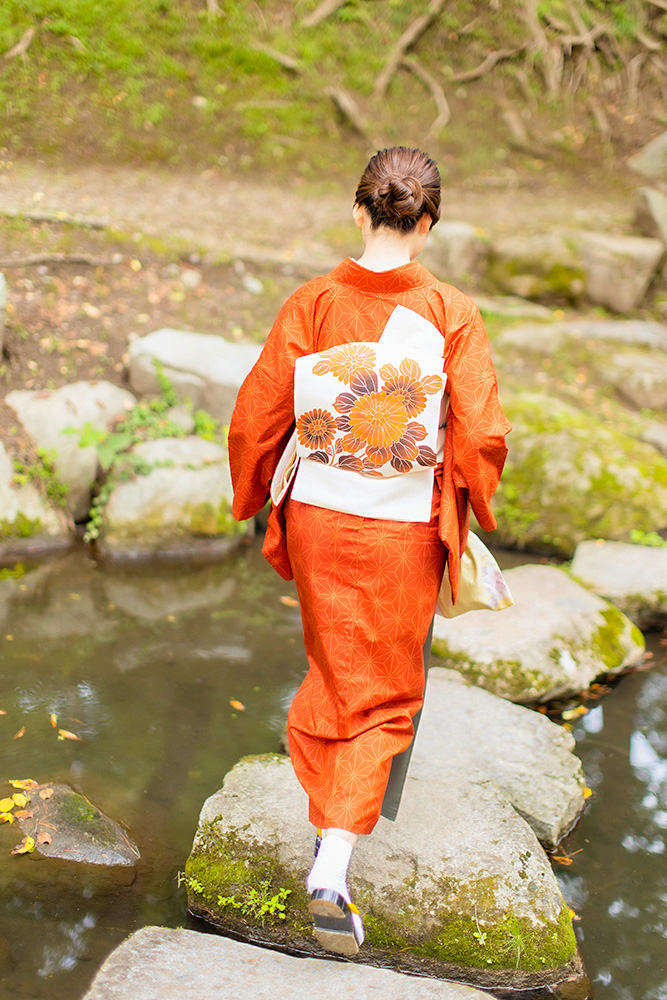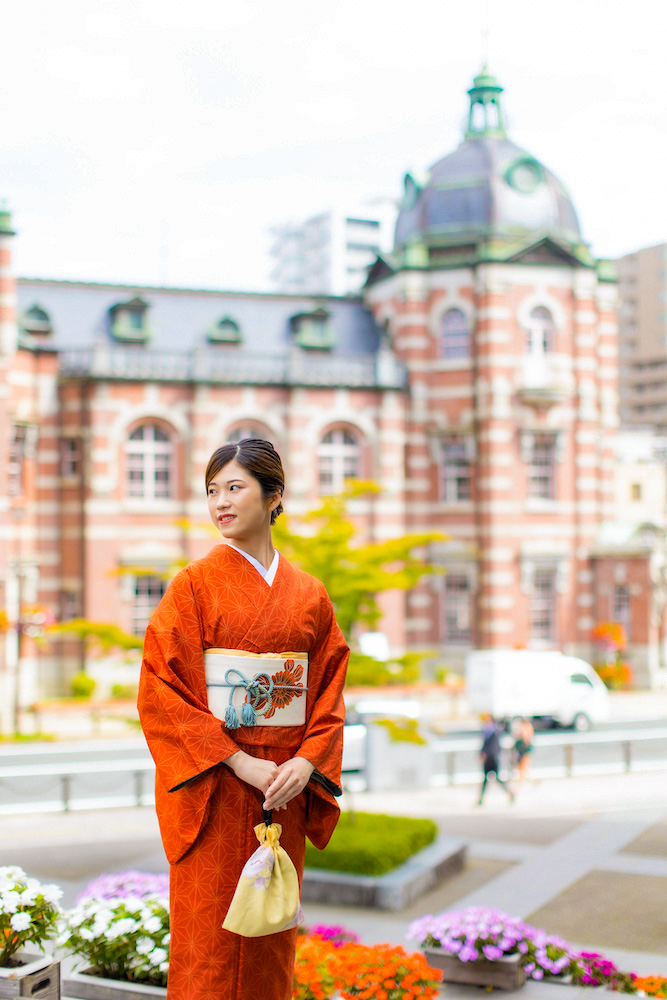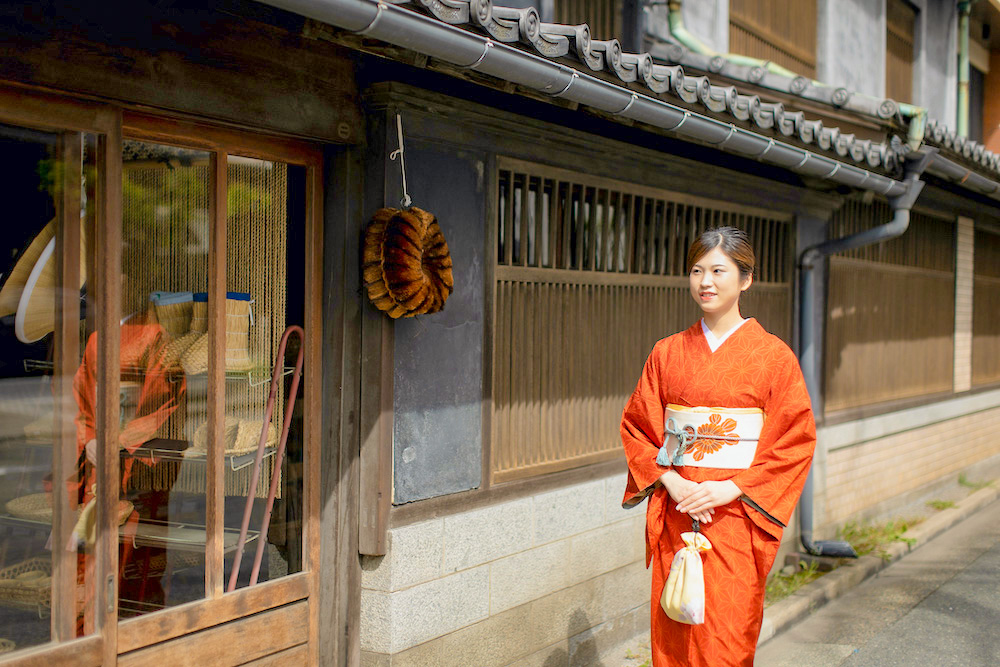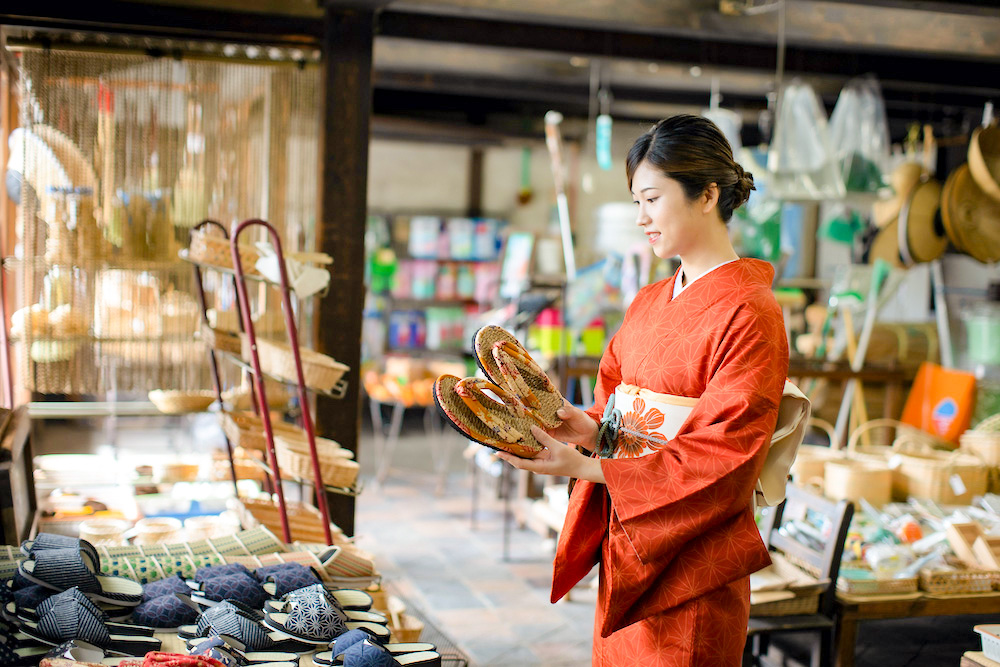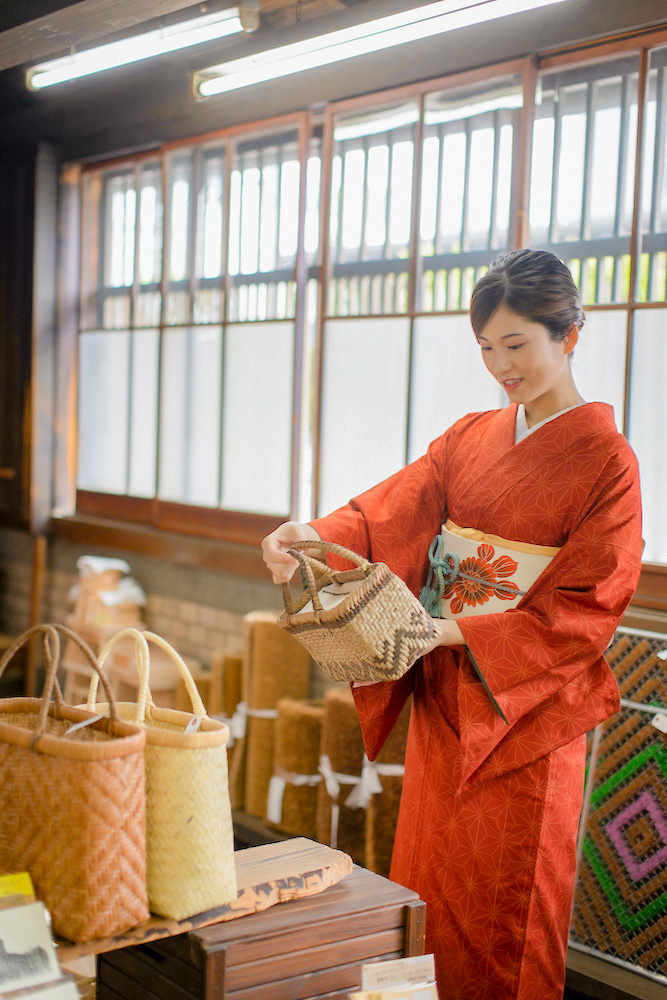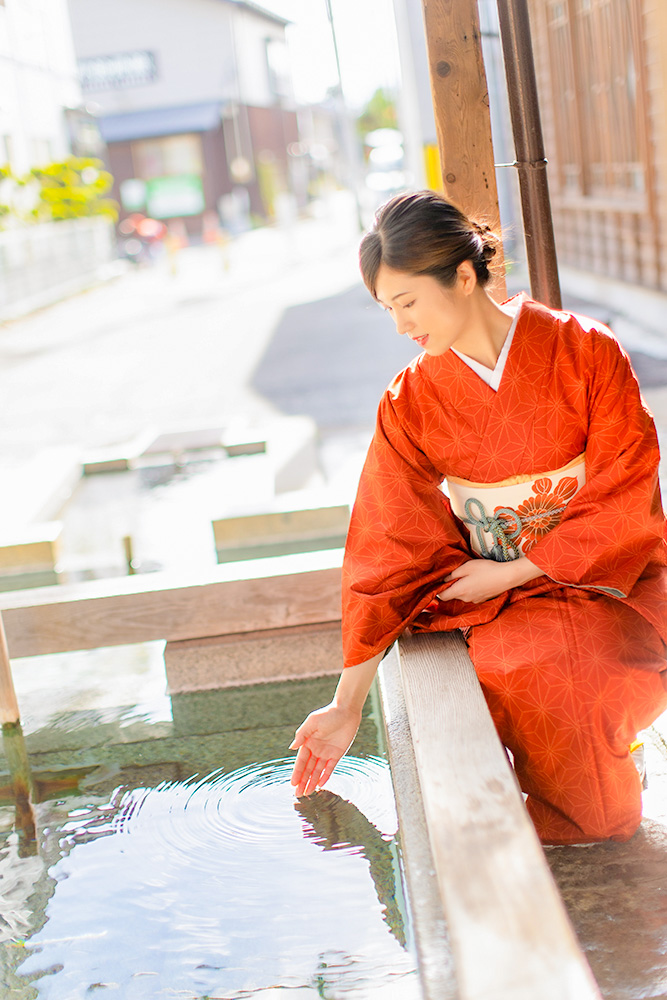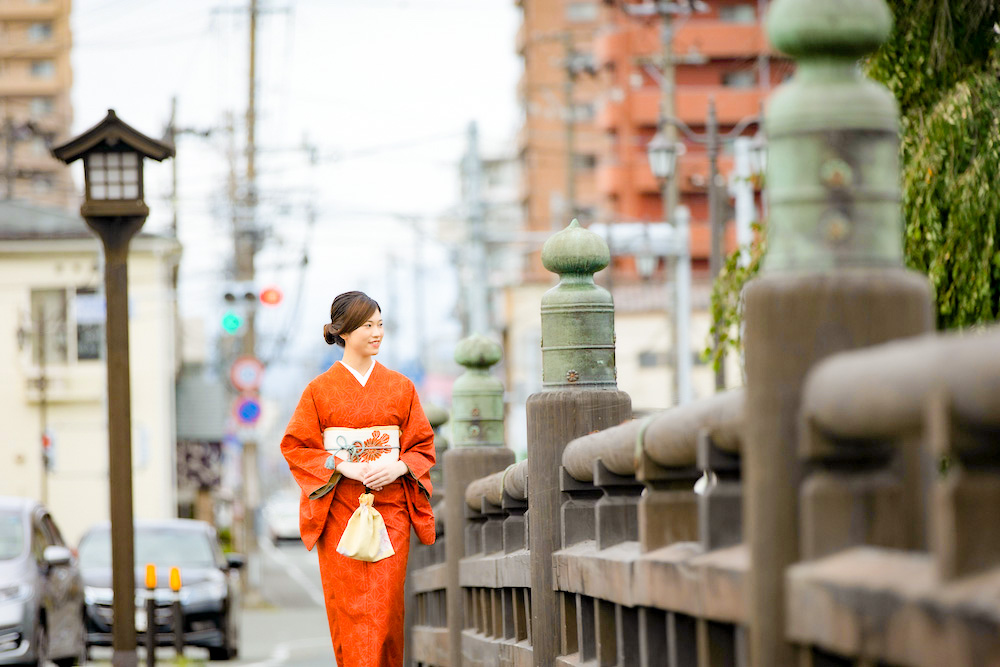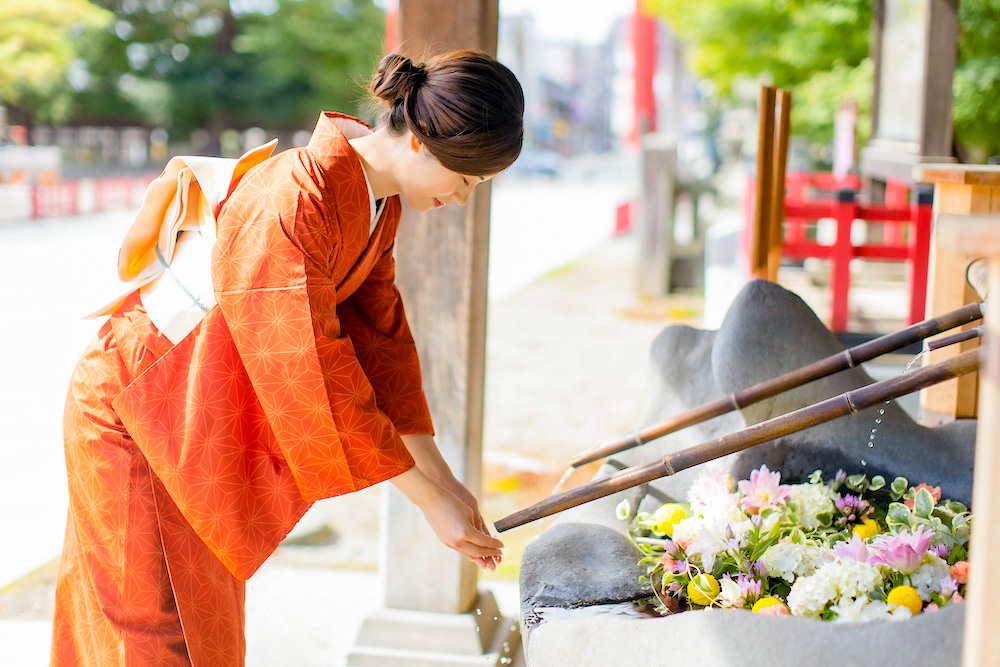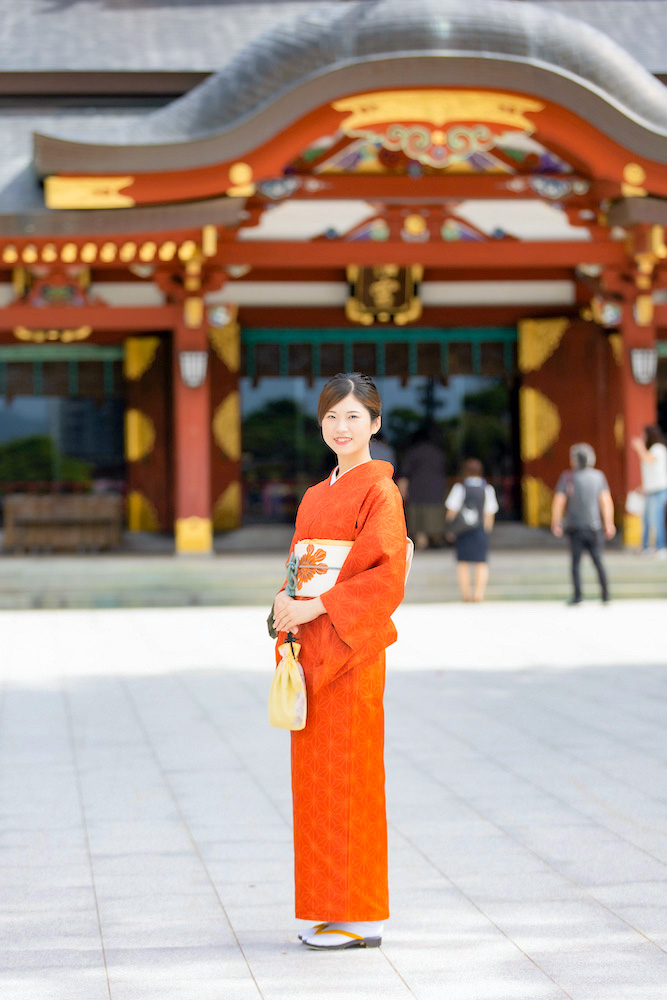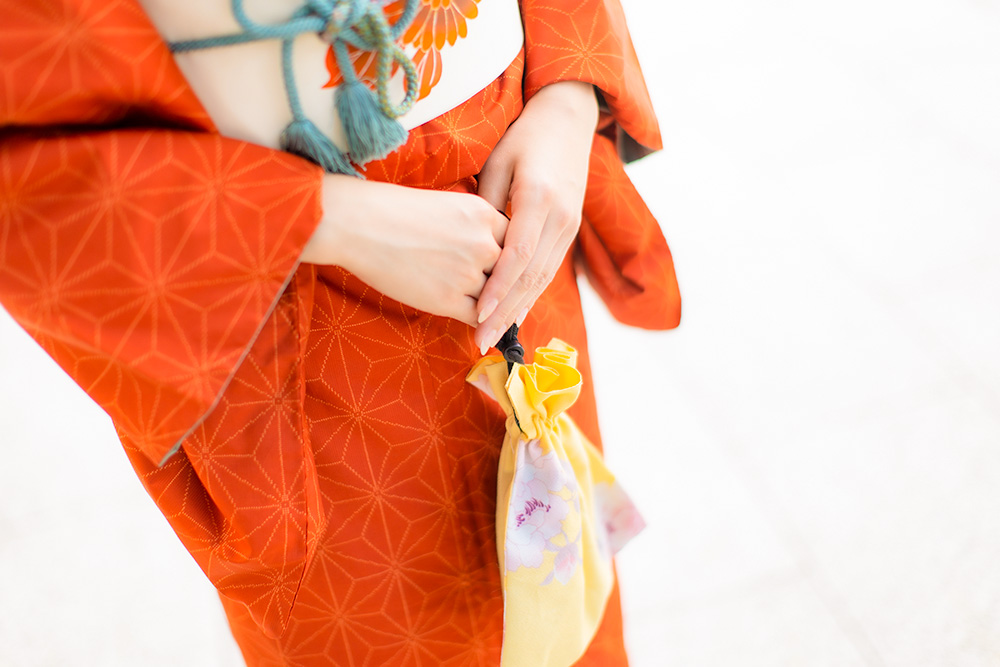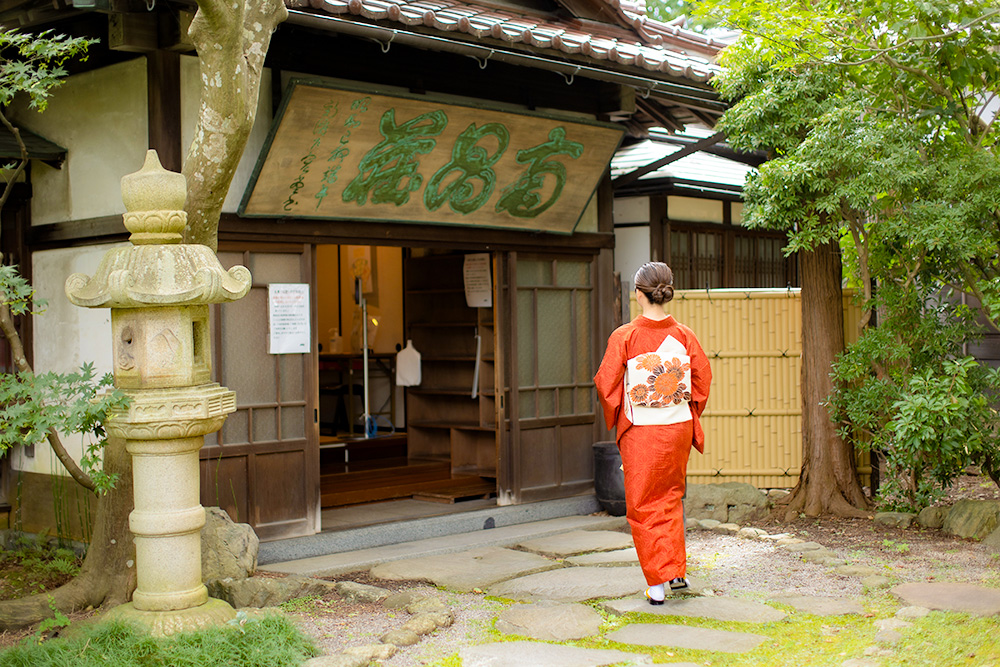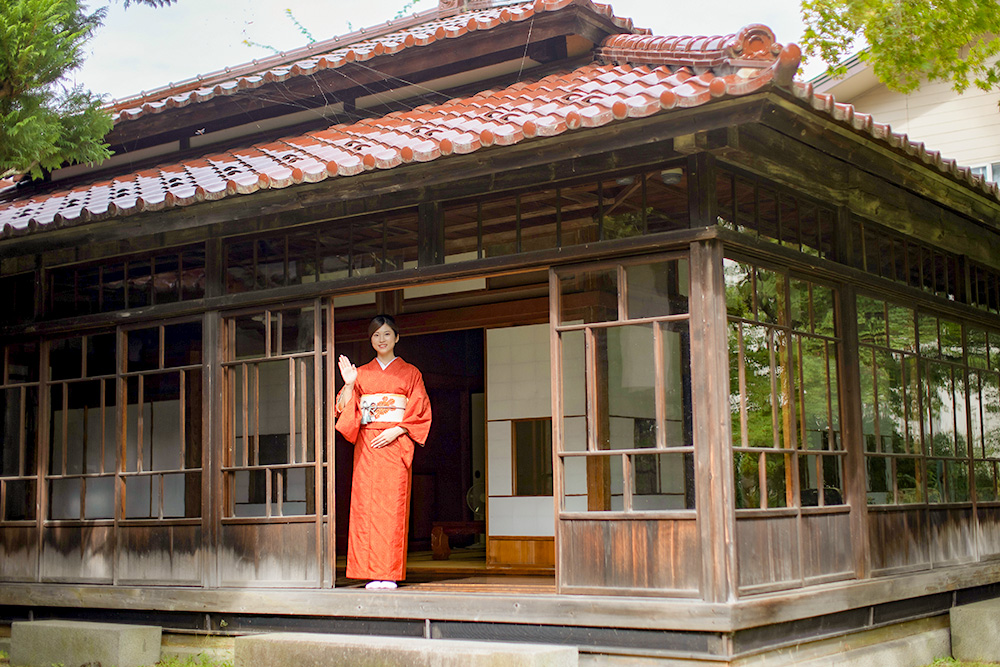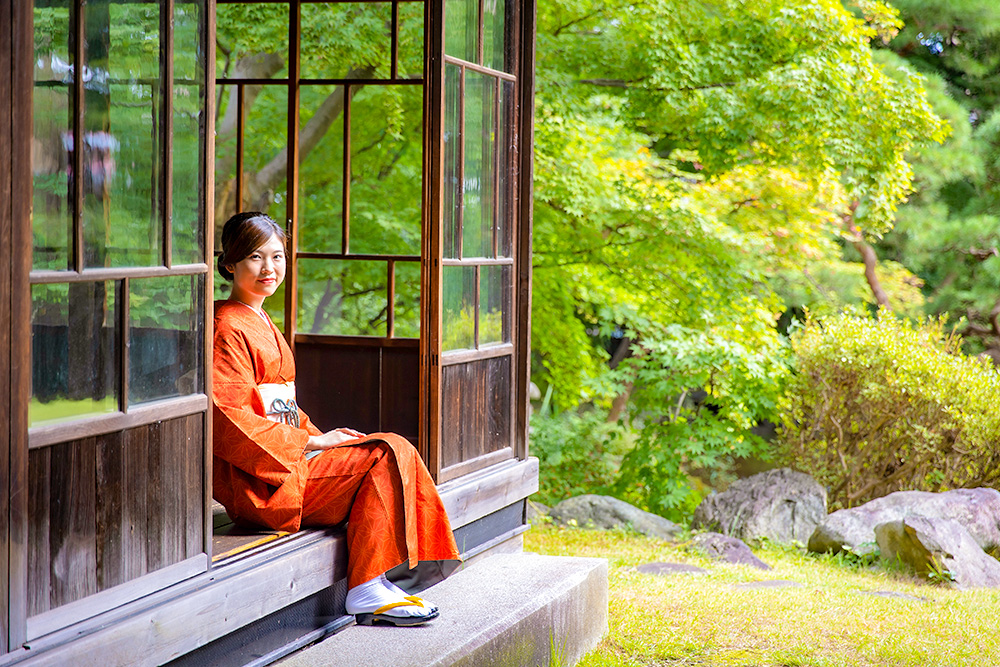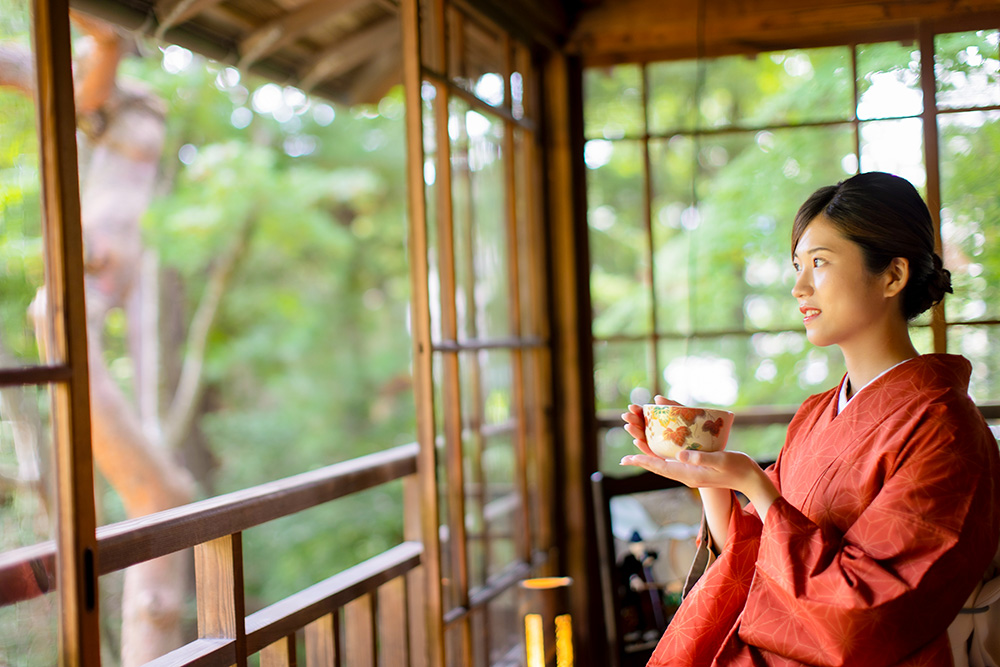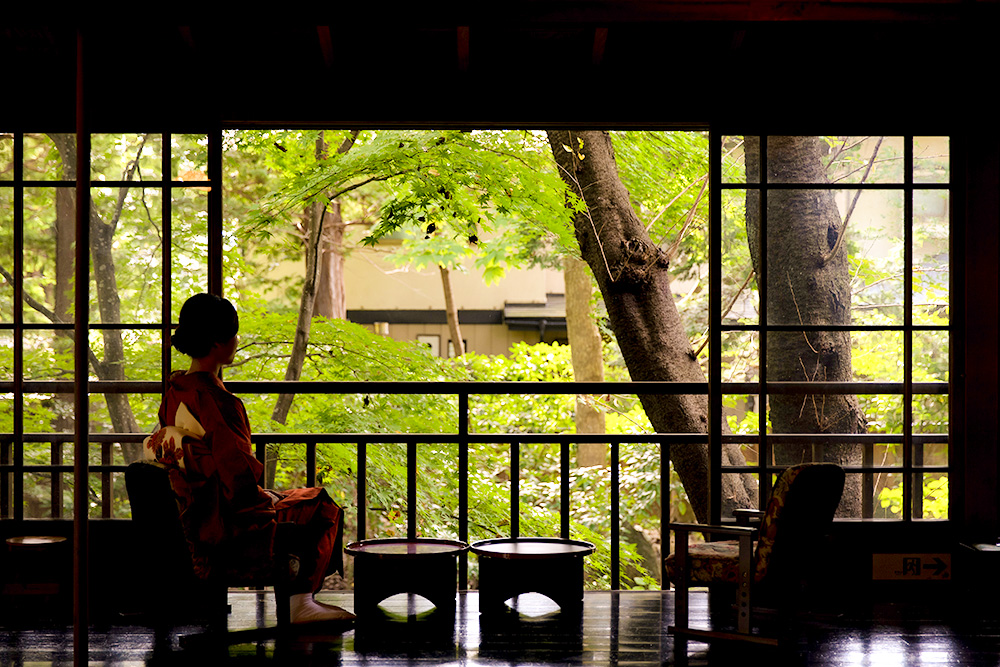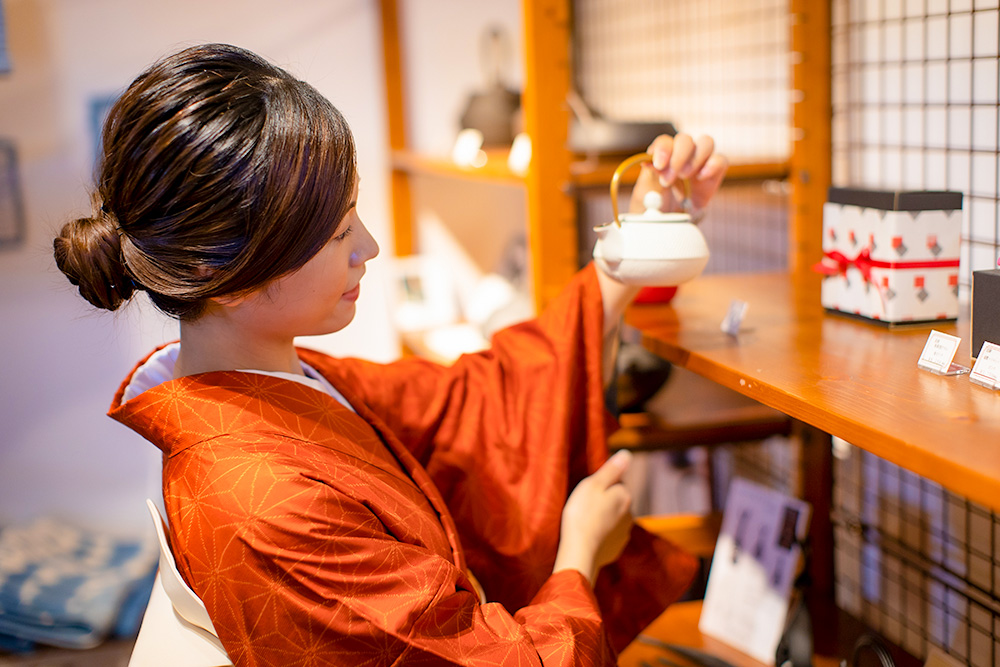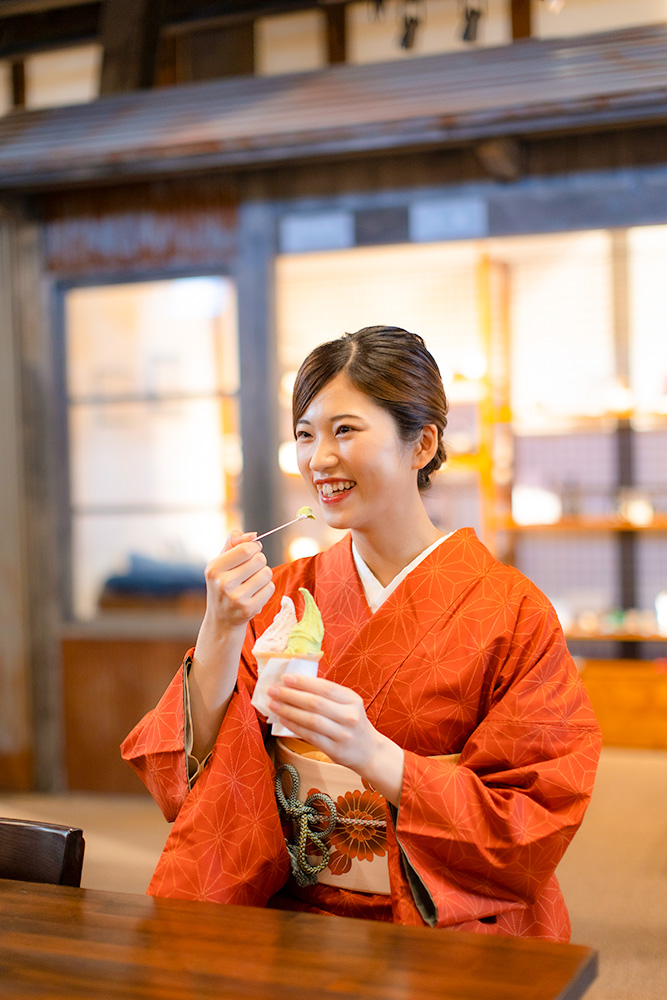Bonnet bus
Running for 54 years
「TSD40-126000」
The Bonnet bus was first registered in 1968. Made by Isuzu Motors, this vehicle is still in active use, and has a weight of 6,252kg, a length of 7.93m, a width of 2.45m, and a height of 2.5m. Utilizing the strengths of a 4-wheel drive, even now it runs between Hachimantai Hot Spring Village and Matsukawa Hot Spring only in the winter. The Matsukawa Hot Spring Kyounso, a member of the Japan Association for Protecting Little Known Hot Springs”, is the final stop. Bus fans from all over Japan visit to ride the Bonnet bus, including tourists who come to Hachimantai in search of little-known hot springs, and people who want to ride this cute retro-style bus and take pictures. This gives the Bonnet bus a unique appeal, and this fall it will be going on tours connecting Morioka City and hot springs. Feel free to apply if you’re interested.
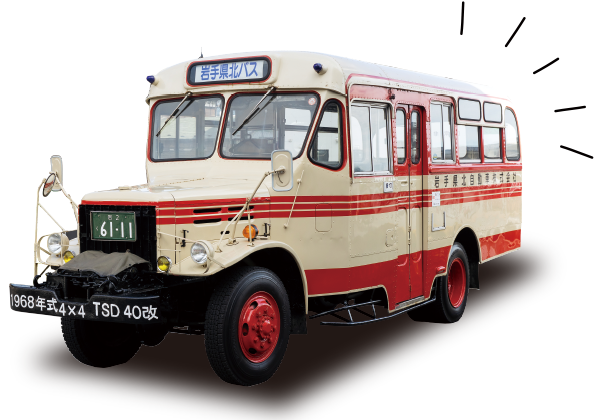
Dressing in Kimono and enjoy Morioka
Dressing in Kimono and enjoy Morioka
- Dates
- Yukata Experience: July 29, August 4, 11 to 13, 20, and 26 (7 days)
Kimono Experience: September 3, 9, 16, 17, 20, 23, October 1, 7, 15, 21, 29 (11 days)
- Time
- 10:00 am to 4:00 pm (maximum of 6 hours, including time it takes to put on)
Note: Finishes at 4:00 pm (Please return by 3:30 pm)
- Venue
- Morioka Machiya Sanki-tei (9-35 Nataya-cho, Morioka near Morioka Machiya-story Museum)
- Fees
- 3,000 yen (Kimono rental fee and dressing fee included.)
Note: Hair and makeup are not included.
- Details
- Dress in Kimono and stroll around the city of Morioka.
Note: This is a tie-up project with a bus company operating cab-behind-engine buses on the relevant days.
- Reservations
- Make reservations via the email shown below.
Prior reservations necessary (up to 3 days in advance)/up to 6 people can be dressed in Kimono simultaneously
■ Tea Ceremony Experience
- Dates
- July 29, August 20, 26, September 9, October 15, 29
- Time
- 11:00 am to 3:00 pm (first 30 people to arrive)
Note: The event will conclude when the sweets are finished.
- Venue
- Morioka Machiya-story Museum / Japanese-style room in main bldg. 2F
- Fees
- 500 yen (includes Morioka sweets)
Note: Guests in Kimono (including Yukata) receive a 100 yen discount.
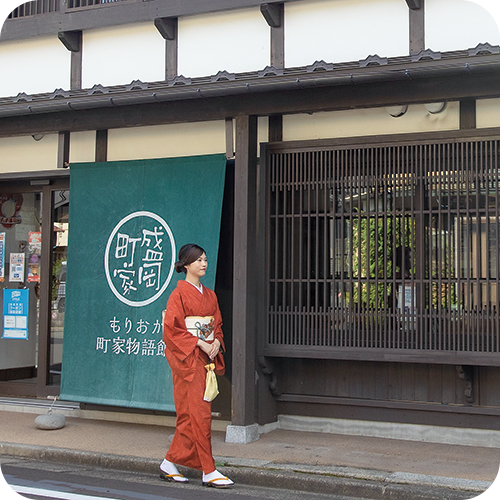

Jazz Live & Wine
Jazz Live & Wine
- Dates and times
- September 30 (Sat.) 1st performance 1:00 pm, 2nd performance 5:30 pm
October 1 (Sun.) 1st performance 11:00 am, 2nd performance 2:30 pm
Note: Venue opens 30 min. before start of performance; one ticket valid for one performance per day
- Capacity
- 60 people
- Venue
- Morioka Machiya-story Museum / Hamato Hall / Taishogura Storehouse 2F
- Fees
- 3,500 yen
- Details
- Take in discussions of wine and enjoy Iwate wine while listening to soothing jazz. Tasting of Iwate wine available on the 2nd floor of Taishogura Storehouse.
- Reservations
- Make reservations via the email shown below.
※Reservations necessary (Reservations close once capacity is reached)
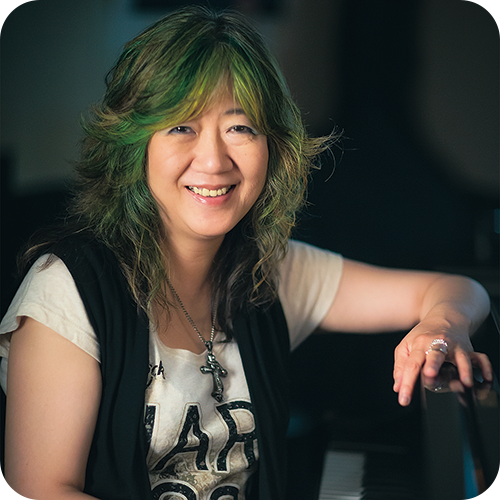

Enjoy with your ears the “Morioka Story” and “Nostalgic SHOWA in Morioka” exhibitions
Enjoy with your ears the “Morioka Story” and “Nostalgic SHOWA in Morioka” exhibitions
■ Recitation Theater “Morioka story”
- Dates and times
- September 2 (Sat.) and September 3 (Sun.) Each day: Performance starts at 2:00 pm
Note: Venue opens 30 min. before start of performance
- Venue
- Morioka Machiya-story Museum / Hamato Hall
- Fee
- 1,000 yen
- Capacity
- 80 people
- Details
- “Morioka Meiji Hakuraizukushi” by Fusen Tachibana and “Watashi no Morioka” by Genzo Matsumoto will be performed as recitation theater native to Morioka. Works of Morioka geigi, a musical art accompanying dance that is one of the best known cultural and art forms passed down in Morioka, will also be performed.
- Reservations
- Make reservations via the email shown below.
Reservations necessary (Reservations close once capacity is reached)
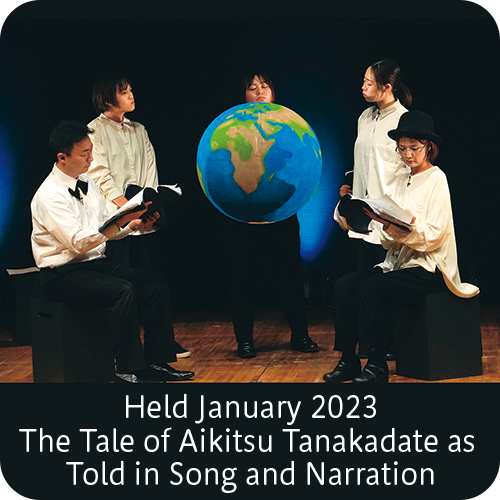

■ Recitation Theater “Morioka note”
- Dates and times
- October 14 (Sat.) Performance starts 2:00 pm
October 15 (Sun.) 1st performance starts 11:00 am, 2nd starts 2:00 pm
Note: Venue opens 30 min. before start of performance; one ticket valid for one performance per day
- Venue
- Morioka Machiya-story Museum / Hamato Hall
- Fee
- 1,000 yen
- Capacity
- 80 people
- Details
- “Morioka Note” by Michizo Tachihara will be performed as recitation theater native to Morioka. It is a work that offers a deep sense of Morioka, which Tachihara called “the small town that I loved,” with piano, cello, and flute accompaniment.
- Reservations
- Make reservations via the email shown below.
Reservations necessary (Reservations close once capacity is reached)
■ Exhibition “Nostalgic SHOWA in Morioka”
- Dates and times
- September 2 (Sat.) through October 29 (Sun.), 10:00 pm to 5:00 pm
Note: Venue closed on the 4th Tues. of every month.
- Venue
- Morioka Machiya-story Museum / Taishogura storehouse 2F
- Fee
- Free (free viewing)
- Details
- In addition to the Genzo Matsumoto collection, there are also works exhibited that are brimming with Showa nostalgia.
Experience Coffee with Different Water and Receptacles
Experience Coffee with Different Water and Receptacles
- Dates and times
- September 10, 17, 24, October 1, 8, 15, 29 (7 days)
1st session: 11:00 am to 12:15 pm; 2nd session: 1:00 pm to 2:15 pm; 3rd session: 3:00 pm to 4:15 pm
Note: One ticket valid for one session per day
- Venue
- Morioka Machiya-story Museum / 1F Community Space DOMA
- Fees
- 1,000 yen (includes sweets)
- Capacity
- 10 people (30 people per day)
- Details
- Compare coffee roasted in-house in Morioka prepared in different ways! 1. Coffee made with water from Daiji Shimizu, selected among the 100 best spring waters in Heisei-era Japan. 2. Coffee brewed with Nambu Tekki ironware. 3. Coffee enjoyed in different lacquerware and other receptacles.
Collaborative project produced by Katsuhiko Takahashi: “Haunted House 2023” in Morioka Machiya-story Museum ~Don’t go into that scary mansion~
Collaborative project produced by Katsuhiko Takahashi: “Haunted House 2023” in Morioka Machiya-story Museum ~Don’t go into that scary mansion~
- Dates and times
- July 28 (Fri.) through August 20 (Sun.) 10:00 am to 5:00 pm (last entry at 4:30 pm)
★Last entry on August 12 (Sat.) and 19 (Sat.) is 6:00 pm
- Venue
- Morioka Machiya-story Museum / Hamato Hall
- Entry fee
- General: 800 yen; High school age and below; 400 yen; Infants 3 yrs. and below: free
Note: Entry bonus for each ticket stub: 50 yen off single order of gelato
- Details
- World-class fear is added to a nostalgic Showa era haunted house, making your mind and heart scream to the MAX! Welcome to the experience, one that you will never forget…
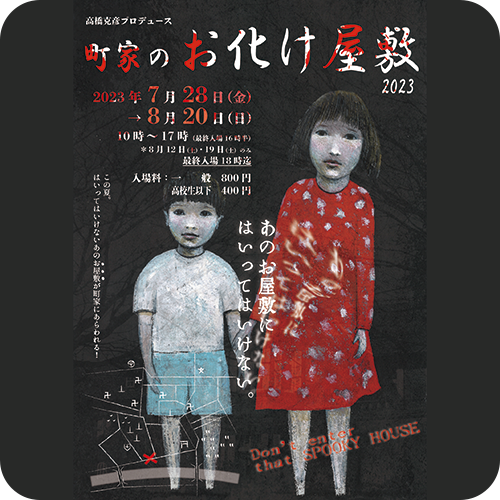

See here for reservations
When sending email, please include the necessary items shown below
●Subject:Experience content reservations
●Body:Please include the name of the “experience” content from 1 to 4, the date and time of your desired reservation, the name(s) of people reserving, telephone number(s), and for those wishing to join “Dressing in Kimono and enjoy Morioka,” please indicate gender, height, and foot size (so your Kimono can be prepared).
《Inquiries》Morioka Machiya-story Museum
10-8 Nataya-cho, Morioka Tel: 019-654-2911
『Bonnet bus』&
Double-decker bus『Scania』
bus tours
[4Course]

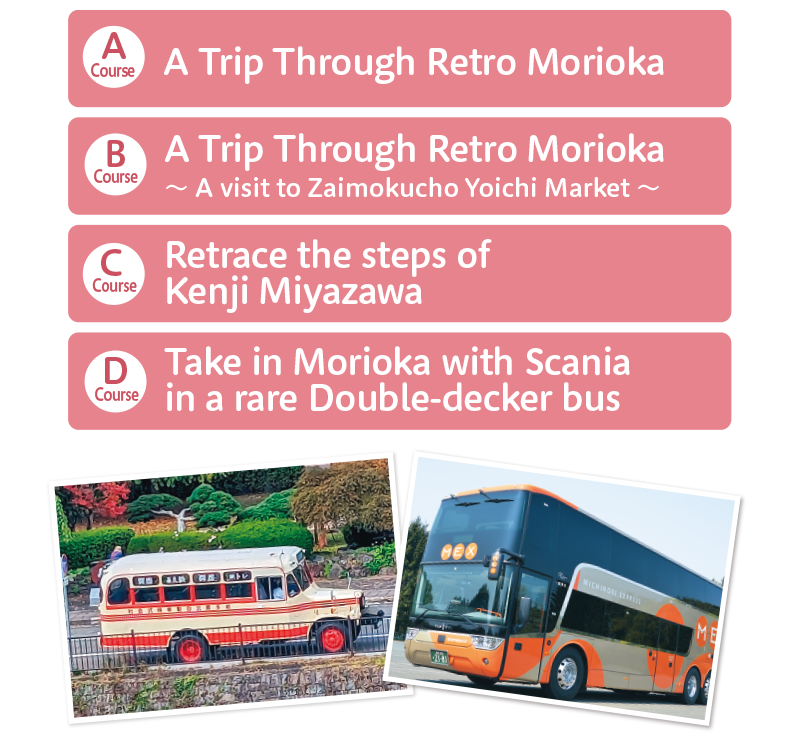
For inquiries or bookings
Guide to Morioka City Tourist Spots
Click here for detailed information on tourist spots in Morioka.
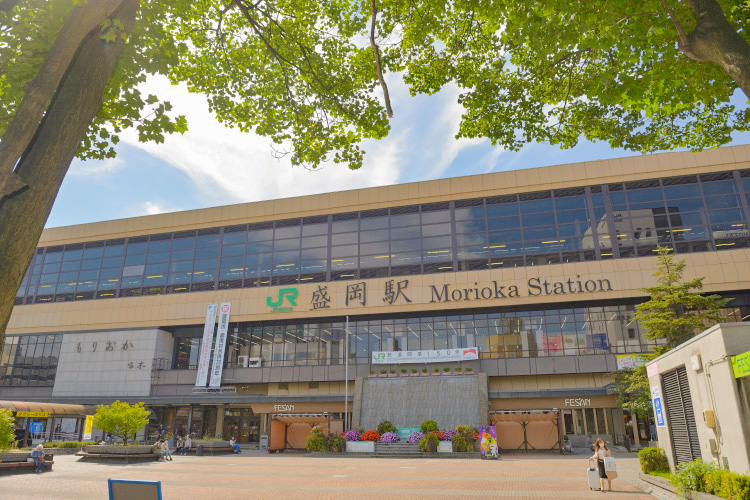
Morioka
Station

Morioka Station
Morioka Station was founded on November 1, 1890. Before the railway was opened, horse carriages would travel between Sendai and Morioka, taking 2 days for a one-way trip. Trains connected these cities in just around 7 hours – a revolutionary speed to people of that era. In 1959, it became a public-private run station featuring the station itself and a department store, the first of its kind in Japan’s Tohoku region. Currently, four conventional lines and the Tohoku Shinkansen are serving the area.
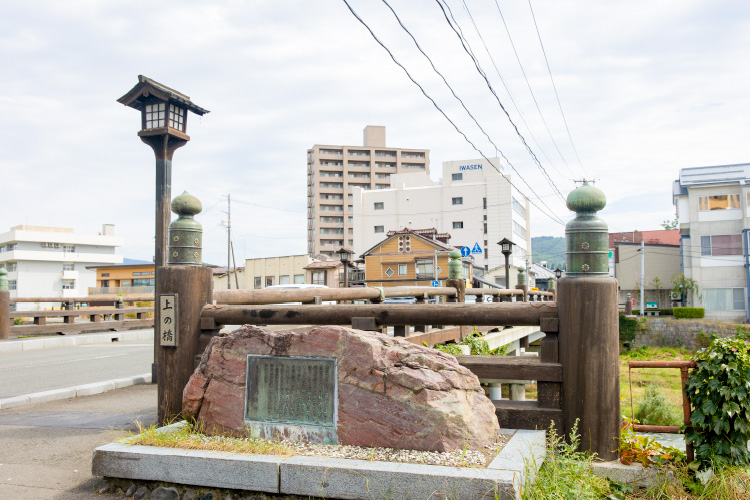
Giboshi Ornament of
Kaminohashi Bridge

Giboshi Ornament of Kaminohashi Bridge
The Kaminohashi Bridge takes its design from the Sanjo-ohashi Bridge in Kyoto, and was built by the 2nd Lord of Morioka Domain, Toshinao, from 1596 to 1615. Toshinao’s name is engraved on the bronze Giboshi handing from the railings, and this has been nationally designated as an important piece of art. In addition, the years 1609 and 1611 are inscribed on it, with 18 of these inscriptions in total.
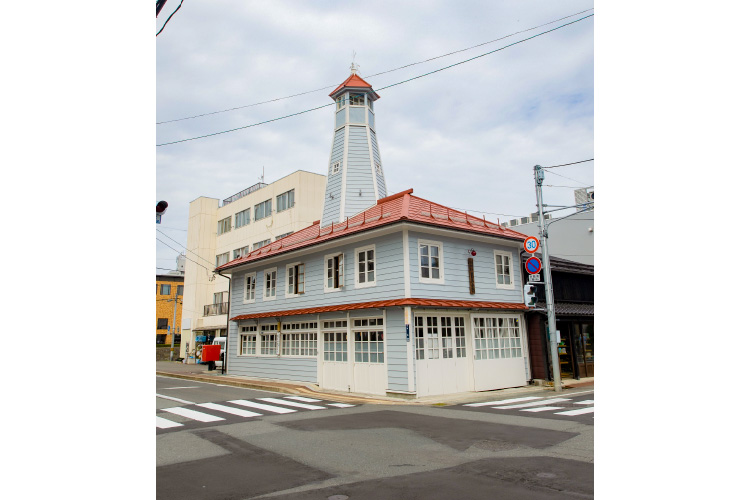
Konyacho Banya
Watchtower

Konyacho Banya Watchtower
The watchtower was constructed in 1913 and had continued to ensure the safety of the region for 92 years, until 2005. The old-fashioned observation tower catches your eye. The 14 meter tall fire tower is a typical wooden-style office building built for the Morioka Fire Department. After undergoing seismic strengthening, in 2022 it was reopened after renovations as Konyacho Banya, a facility for exchanges and experiences. The first floor has a café, sales of miscellaneous goods, Sakiori (Rag weaving goods), and displays regarding the history of the watchtower. The second floor is a space for hands-on experience programs for embroidery and broach making. (Reservation required)
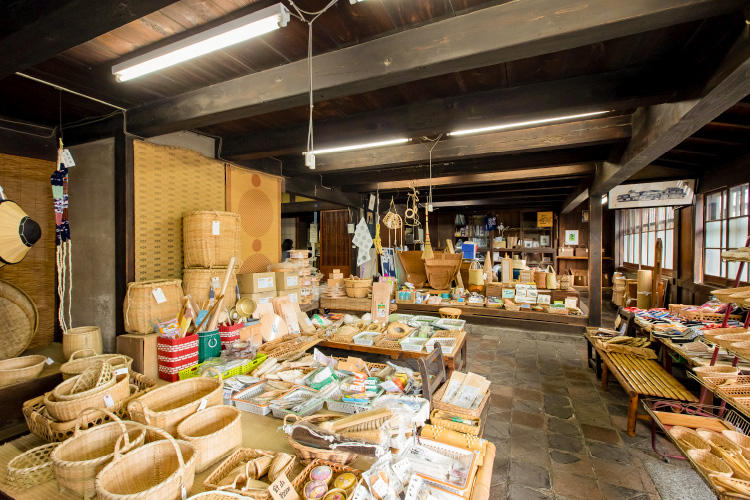
Gozaku
Shop

Gozaku Shop
This shop was founded in 1816, around 200 years ago. A prosperous store that made a fortune handling household goods. Here, you can see the townhouse architecture representative of Morioka.
This is a long-established store that deals in Goza/Tatami mats. For generations, the proprietors have been calling themselves Kyubei Mori, so customers began calling them Gozaku.
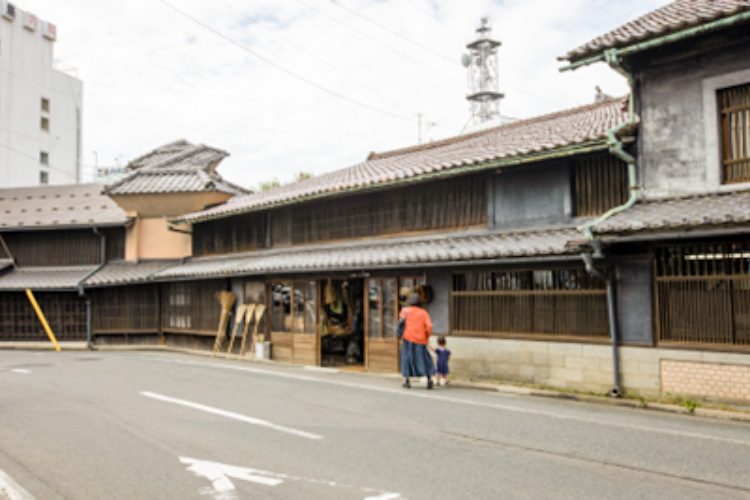
Konyacho Area

Konyacho Area
In Japan’s Edo Era, Konyacho was a town for the townspeople, developed along the Oshu-kaido Road passing through Morioka Castle. Around the end of the Edo Era, it became an important shopping area in Morioka Castle town, with prosperous and long-established stores beginning to line the streets.
The name Konyacho comes from the many konya (“dyehouse” in Japanese) that used the clear streams of the Nakatsu River. And the cloth dyed by Nanbu Murasaki and Nanbu Akane were specialties of the area then known as the Morioka Domain.
There are Morioka Dagashi (Morioka little snacks), Nanbu Senbei, and stylish cafes. In the streets here, you can discover a good old-fashioned townscape mixed among the modern buildings.
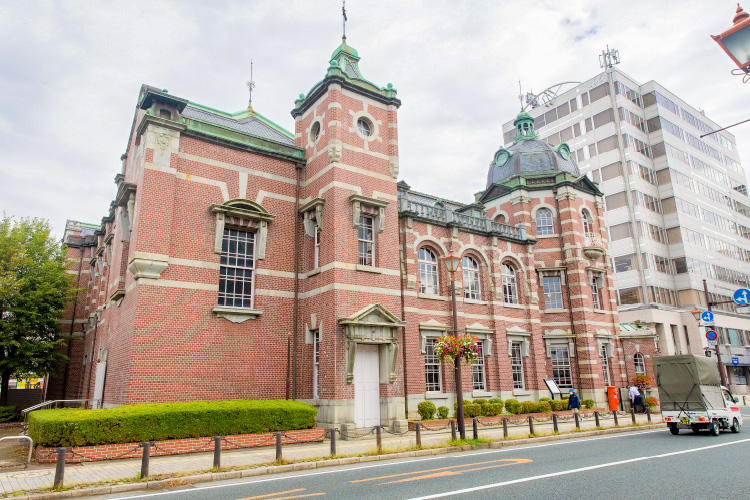
The Bank of Iwate
Red Brick Building

The Bank of Iwate Red Brick Building
This Tatsuno renaissance Western style building was constructed by Manji Kasai, a native of Iwate Prefecture who was commissioned to design Tokyo Station, and Kingo Tatsuno, said to be the father of modern Japanese architecture. It was completed in 1911. It stopped operations as a bank in August 2012. Three and a half years later, after having undergone preservation and repair work, it was opened to the public in July 2016.
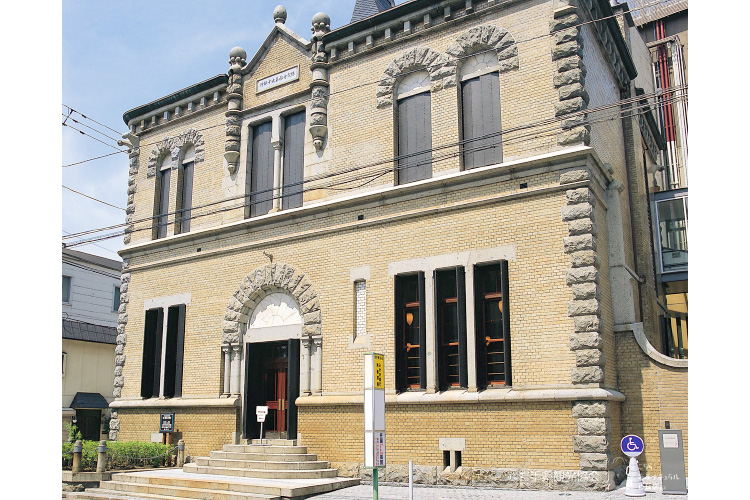
Morioka Takuboku and
Kenji Museum

Morioka Takuboku and Kenji Museum
This museum features a corner that uses sound and light to express the town that nurtured the youths of Takuboku Ishikawa and Kenji Miyazawa, as well as displays with materials and works about them.
This building was originally constructed in 1910 as the former 90th Bank. However, the value of the pioneering and unique design, characteristic of the Taisho and early Showa eras of Japan (from the 1910s to 1920s), has been recognized. In 2004, it became the 3rd Nationally Designated Important Cultural Property in Iwate Prefecture. As a historically preserved building, the appearance lets you feel the history of Morioka. Go inside and you can see the remaining vestiges of the bank, exhibition items, a café corner, and a space where you can take a rest.
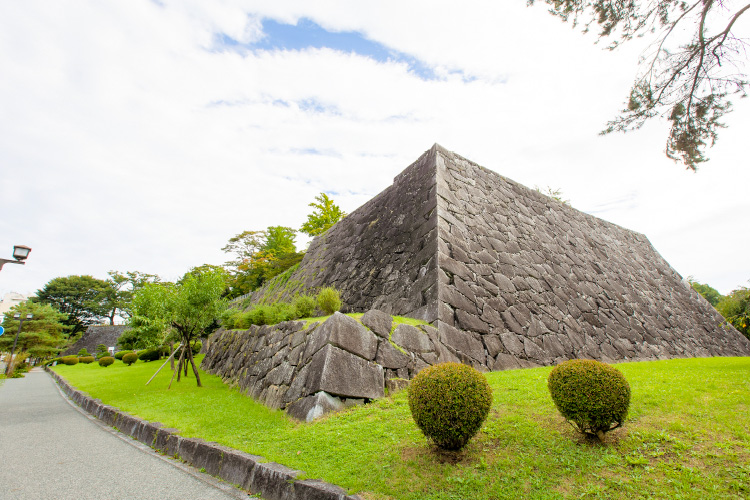
Morioka
Castle Site Park

Morioka Castle Site Park
The Morioka Castle Site, with their remaining magnificent stone walls, were inherited by the 26th Lord of the Nanbu Domain, Nobunao, the 27th Lord Toshinao, and the 28th Lord Shigenao. The castle took around 40 years to complete. It is counted as one of the three great castles of the Tohoku region, along with Tsuruga-jo Castle, located in Aizuwakamatsu, Fukushima, and Komine-jo Castle in Shirakawa.
The site is currently maintained as a park, but in a corner of this park are a slab with a haiku by Takuboku Ishikawa - "Lie on castle grass / Being sucked in by the sky / My mind at fifteen" - and another slab with the words of Inazo Nitobe - "I wish to become a bridge across the Pacific."
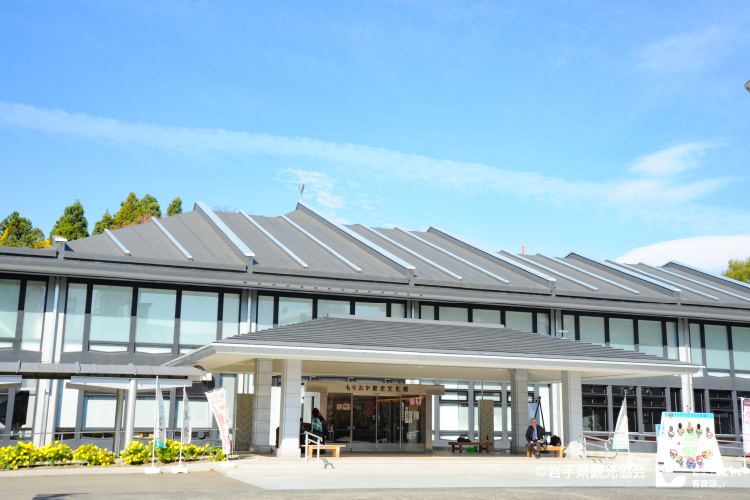
Morioka History and
Culture Museum

Morioka History and Culture Museum
The Morioka History and Culture Museum opened in 2011. This facility was originally the Iwate Prefectural Library, and the building has been completely renovated. Here, you can find displays on the Chaguchagu Umakko (Horse Parade), the Sansa Odori dance, the Morioka Autumn Festival, festivals representative of Morioka, and materials regarding the history of the Morioka Domain and the Nanbu Clan.
The exterior of the building is all black, bringing to mind Nanbu Tekki (Ironware). The roof represents Iwate Mountain, and the yellow leaf buds on the roof represent the growth of Iwate.
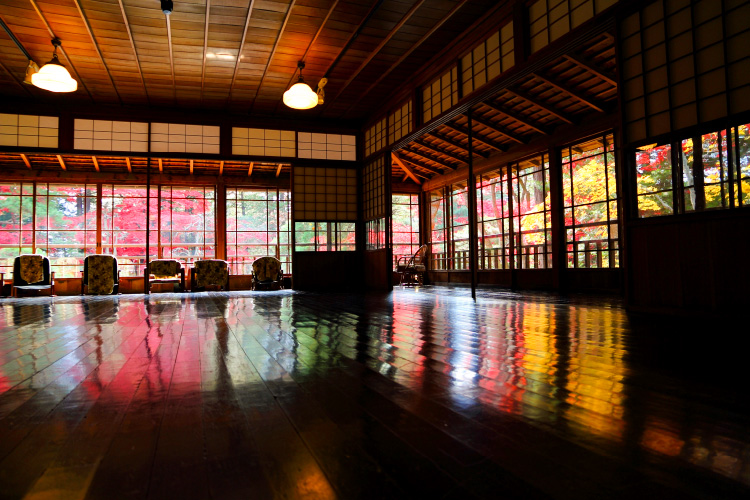
Nanshoso
Residence

Nanshoso Residence
The garden where you can feel the changes in the seasons, and the traditional Japanese building, are famous as photo spots. Designated as an Important Building with Protected Garden and Landscape by Morioka City, and as a registered monument (garden) by the country of Japan.
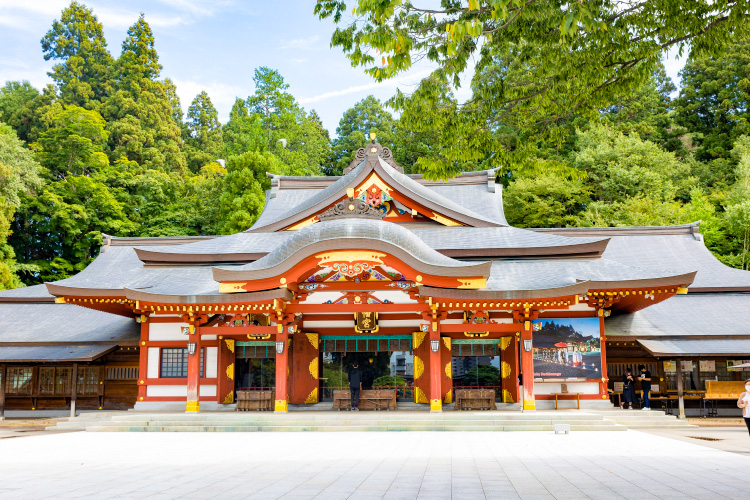
Morioka Hachimangu
Shrine

Morioka Hachimangu Shrine
Built by the 29th Lord, Shigenobu Nanbu, over 300 years ago. Generations of Nanbu lords are worshipped here and are believed to be guardian deities of the domain, as well as general guardians of Morioka.
They have been venerated by local people since ages past as gods who provide what people need in their lives, from agriculture, industry, commerce, learning, food, clothing, and shelter. The shrine has been repeatedly reconstructed due to the great fire in Morioka in 1884, as well as snowstorms. However, the current shrine was reconstructed as Shin Hachiman in December 1997.
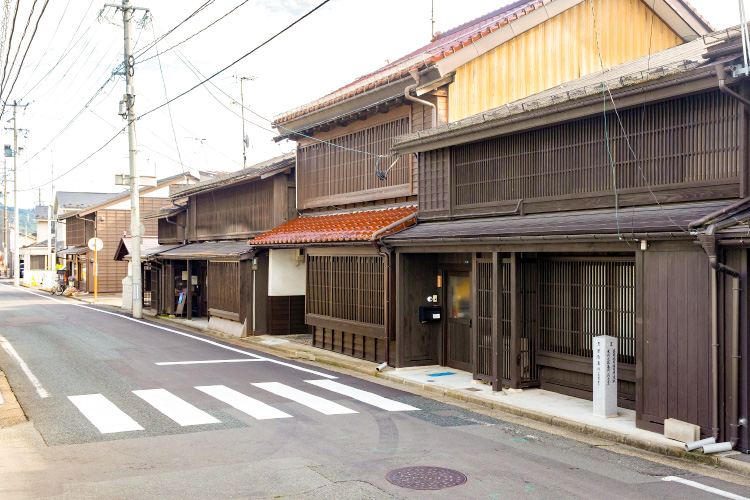
Natayacho
Area

Natayacho Area
From the Edo Period (1600s), to the Meiji era (late 1800s), this area prospered along with the development of boat transportation in the Kitami River. The town is located in the southern entrance of Morioka Castle, where the Former Oshu-kaido Road, the Tono/Kamaishi-kaido Road, and the Miyako-kaido Road converge. Various stores line the streets, including sake shops, rice shops, and farm tool shops, showing an area bustling with trade. Even now, the surrounding area has more than 50 Morioka Machiya, including those not open to the public. The area has the same feel as it did back then, so you can enjoy a nice stroll through this old-fashioned town.
Blessed by rich spring water, including Seiryu Shimizu spring water and Daiji Shimizu spring water, many famous stores have been built here that represent the Morioka which has been passed down to the modern day.
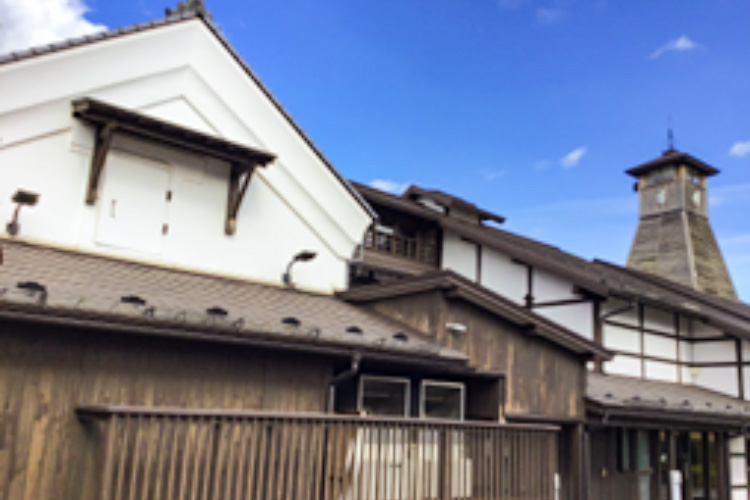
Morioka Machiya-story
Museum

Morioka Machiya-story Museum
鉈The Morioka Machiya-story Museum is an excellent starting point for a walk through the Natayacho Area of Morioka City. The Hamato Sake Brewery, a preserved building in Morioka City, was renovated and reopened in July 2014. This building maintains the features unique to Morioka Machiya constructions, and has the main building, Taishogura storehouse, Bunkogura storehouse, and Hamato Hall. Enjoy the nostalgic atmosphere of the recreation of the beloved shopping area while learning about the history and culture of Morioka. Covering the period from 1955-1965, the museum includes music record and toy exhibitions, records of the lives of common people, and introductions of people with connections to Morioka.
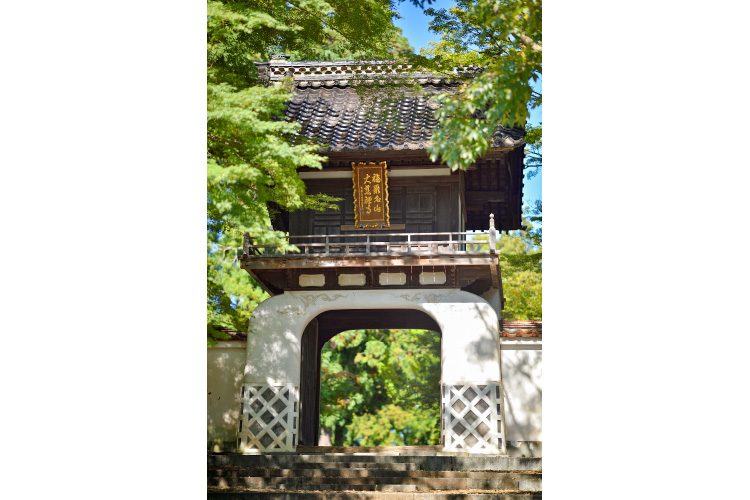
Daijiji
Temple

Daijiji Temple
The family temple of Takashi Hara, known as the Common Premier (as he was the first commoner to serve as Prime Minister). While his gravestone is certainly not large, Hara is laid to rest here in accordance with his will, in which he stated that his gravestone must not be larger than those of his ancestors. The grave of his wife Asa was constructed next to his. She continued to support her husband until the end and wished to be buried at the same depth as him.
The temple gate is in the rare Romon tower gate style. Two dragons are depicted on the Chinese-style Romon ceiling, which are especially eye-catching.
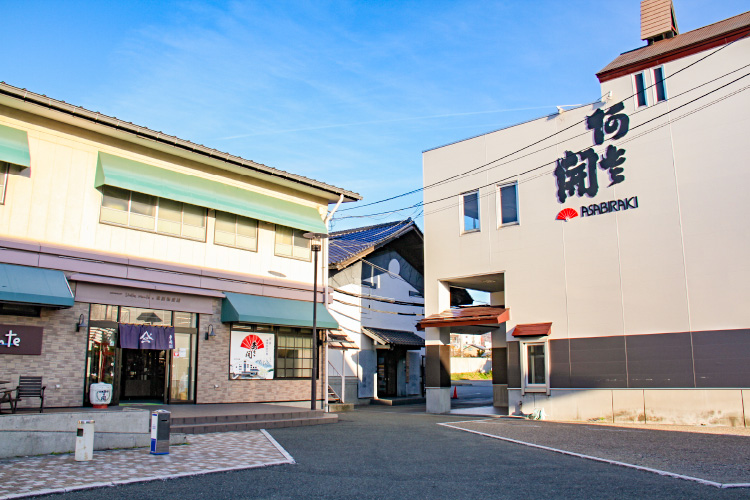
Asabiraki Sake
Product Shop

Asabiraki Sake Product Shop
Asabiraki Sake Brewery was founded in 1871, during the Meiji Restoration period. After this period ended, Genzo Murai, who was once a Nanbu Domain retainer, quit his position as a soldier, and aspired to a fresh start as a merchant after his time as a samurai. This is the history of this Sake brewery that began sake production in Morioka.
The name Asabiraki comes from the expression “Asa ga hiraku” (“the morning starts”), from a line in a poem in the Manyoshu anthology of Japanese poetry. It refers to a place where boats start rowing early in the morning and is said to come from the line “The night ends and the morning starts / Let’s start rowing the boat.”
They have sake options such as pure rice sake, as well as Kasuzuke (food pickled in sake lees), and their Amazake (sweet non-alcoholic sake), made from 100% rice malt, is especially popular.
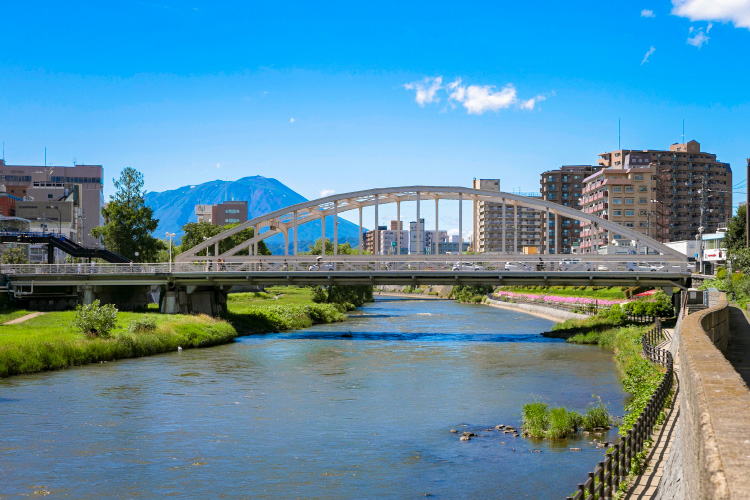
Kitakami
River

Kitakami River
With Mt. Mido in Iwate Town as its source, it flows for 249km. It is the longest river in Tohoku region, flowing from Ishinomaki (Ishinomaki) in Miyagi Prefecture into the Pacific Ocean. The river basin has locations such as Shibutami, the hometown of Takuboku Ishikawa, Hanamaki, where Kenji Miyazaki was born, and Hiraizumi, which conveys the Golden Culture of the three Fujiwara generations. The culture of Iwate Prefecture has been cultivated by the Kitakami River.
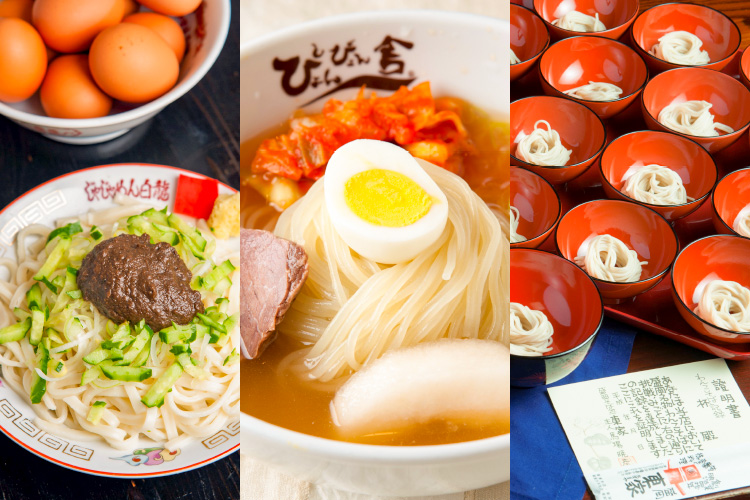
The Three
Great Noodles
of Morioka

The Three Great Noodles of Morioka
The Three Great Noodles of Morioka are known all over Japan, even among other Morioka specialties. Morioka Reimen was made by the head of a gourmet garden who came to Japan from the northern part of the Korean peninsula. He made the dish to suit Japanese tastes. Morioka Reimen is a noodle dish with very firm noodles and a unique, addictive texture. It is beloved by Morioka residents.
Morioka Jajamen, which originally meant "stir-fried miso udon noodles," was created based on noodles from Northeastern China. It is eaten by mixing flat noodles with specially made miso, and it becomes addictive the more you eat it. And the Wanko Soba, born out of the "spirit of hospitality," is a bowl of buckwheat noodles served in small bites and eaten over and over again. 15 servings of Wanko Soba equals 1 serving of mori soba. Try and see how many servings you can eat!
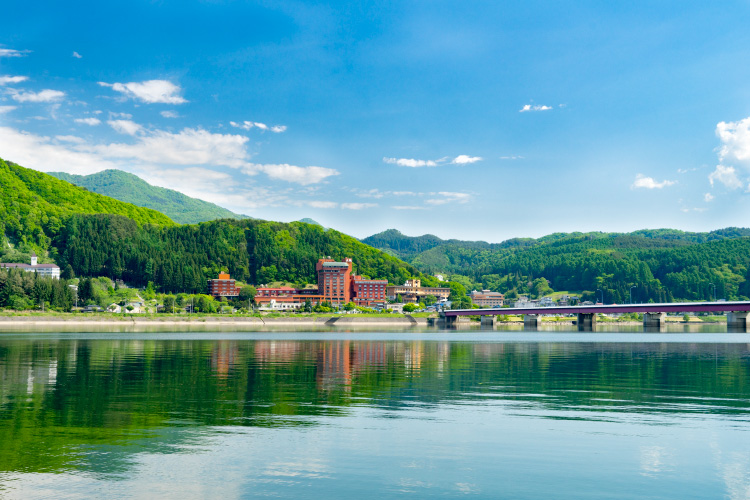
Tsunagi Hot
Springs and
Lake Gosho

Tsunagi Hot Springs and Lake Gosho
The Tsunagi Hot Springs that come up near the Lake Gosho shore have been open for around 950 years. These hot springs are known as the salon of Morioka. There are charming accommodations that can meet your needs, as well as 6 springs. The water in the simple sulfur springs is excellent for your skin.
Lake Gosho is a dam lake that was created as part of a plan to build 5 dams in Iwate. It was completed in 1981. Nearby is the Koiwai Farm, famous for being one of the largest private farms in Japan, as well as Morioka Handi-Works Square, which introduces the specialties of Morioka.
Here, you can also enjoy beautiful seasonal scenery, including the cherry blossoms of spring, the fireworks festivals of summer, the fallen leaves of autumn, and the illuminations of winter.
Morioka Town Guide / English Map
This map can be enjoyed just by looking at it and was planned and created by the GoTo Morioka – Walk, Visit and Have Wonderful Encounters Project team.
Please use this map by downloading it and printing it out. *Map is in Japanese
Morioka Highlight Gallery
Click to enlarge the pictures.
